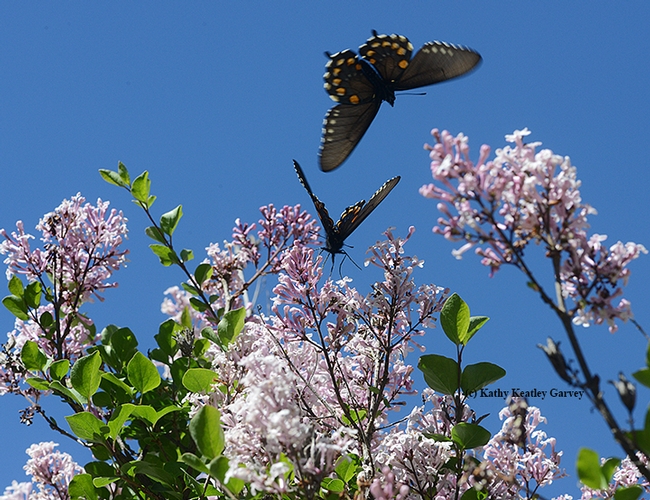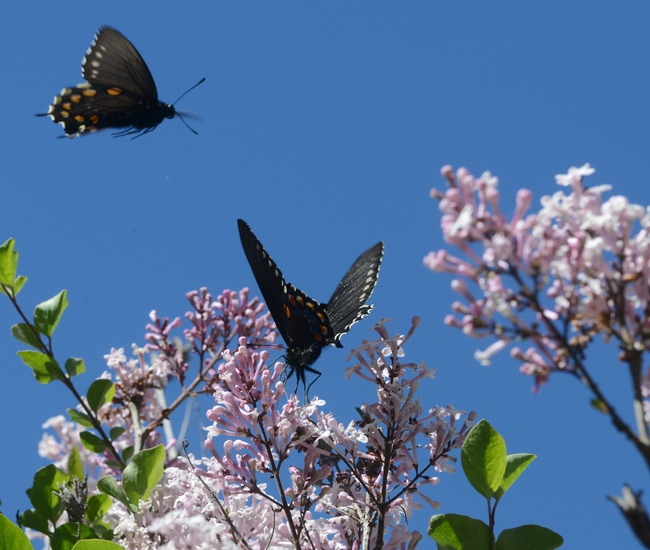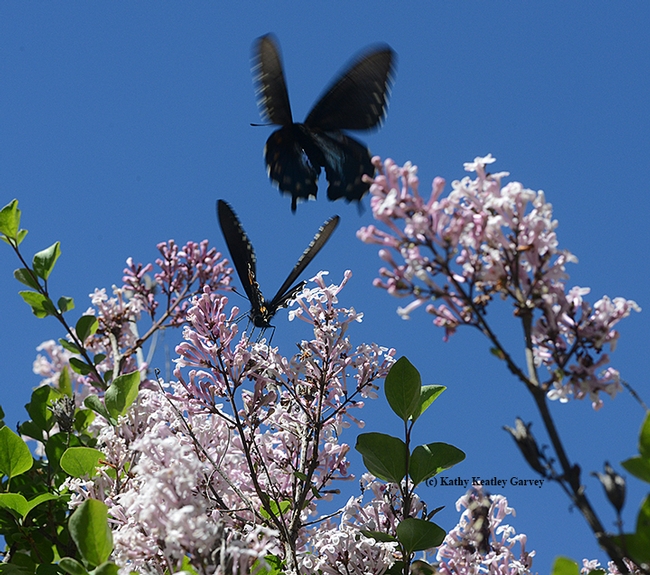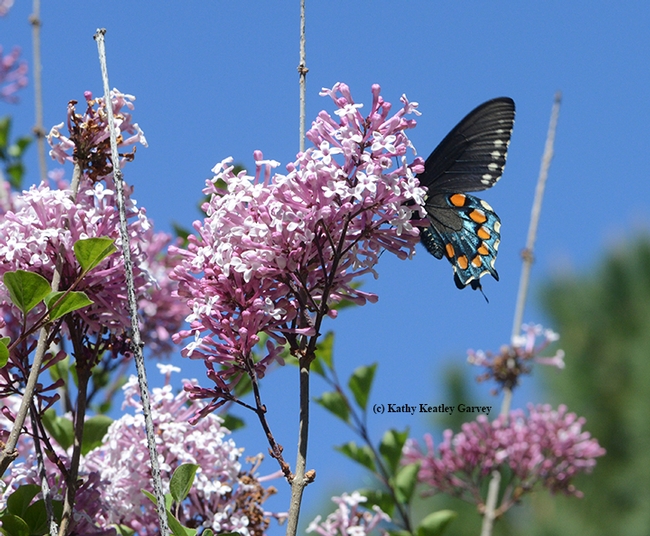Today was a glorious day in the Ruth Risdon Storer Garden in the UC Davis Arboretum.
Absolutely glorious.
The scent of the Korean lilac, Syringa patula, drew several pipevine swallowtails (Battus philenor), their iridescent blue hind wings gleaming in the late morning sun.
Butterfly guru Art Shapiro, distinguished professor of evolution and ecology at UC Davis, calls the pipevine swallowtail "the signature riparian butterfly of our region, occurring along streams in foothill canyons and on the Central Valley floor, essentially everywhere where its only host plant, California Pipevine or Dutchman's Pipe, Aristolochia californica, occurs."
"This species is warningly colored and inedible to vertebrate predators," Shapiro writes on his website. "It derives its protection from the toxic aristolochic acids produced by the host, which it sequesters; females even pass these along to the eggs, which are also protected (and are brick red, laid in bunches of up to 20, and quite conspicuous)."
Shapiro notes that the pipevine swallowtail flies from late winter (February-March), to autumn (October, occasionally November) but is "much more numerous before the 4th of July than later."
The Korean lilac provides a great nectar source for the butterflies. This one in the Storer Garden is a good 10 feet all. Native to China and Korean, it's also known as "The Miss Kim Lilac," discovered by Elwyn Meador and reportedly named for his Korean assistant.
So today, the iridescent blue wings and the featherly purple blossoms collided in the air in the Storer Garden, with promises of more butterflies and blossoms to come.
Meanwhile, the UC Davis Arboretum officials are gearing up for their first public plant sale of the spring season. set Saturday, April 2 from 9 a.m. to 1 p.m. at the UC Davis Arboretum Teaching Nursery on Garrod Drive, right next to the Storer Garden. Check out the website for the list of plants available.
Attached Images:

Two pipevine swallowtails on the Korean lilac, Syringa patula, in the Storer Garden, UC Davis Arboretum. (Photo by Kathy Keatley Garvey)

Pipevine swallowtail soars over the Korean lilac where another pipevine swallowtail is nectaring. (Photo by Kathy Keatley Garvey)

Pipevine swallowtails in action. (Photo by Kathy Keatley Garvey)

The gleaming iridescent blue hind wings of the pipevine swallowtail and the stunning purple blossoms of the Korean lilac. (Photo by Kathy Keatley Garvey)